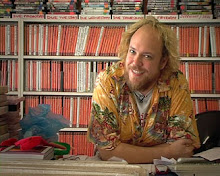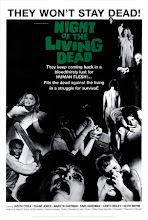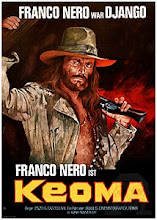 The Secret of Dr Orloff
The Secret of Dr Orloff Spain/France 1964 b&w
aka El Secreto Del Dr. Orloff, Brides of Dr. Jekyll, Les Maîtresses du Dr. Jekyll/ “The Mistresses of Dr. Jekyll”, Dr. Jekyll's Mistresses, Dr. Orloff's Monster, Dr Orlof’s Secret
Director/Writer Jesus Franco
Cast “Hugh White”/Hugo Blanco (Andros), Agnès Spaak (Melissa), Perla Cristal (
 The Secret Of Dr Orloff from 1964 is a semi-sequel to Franco’s first horror picture, The Awful Dr Orlof. Made in 1961 in gorgeous black and white, Franco managed to fashion an idiosyncratic twist on both the Frankenstein story (in Orlof and his monster Morpho) – and the French horror classic Eyes Without A Face. Orlof, with its intense and perverse atmosphere and nightmare logic, initiated a new wave of sleaze and violence that emerged from ultra-conservative
The Secret Of Dr Orloff from 1964 is a semi-sequel to Franco’s first horror picture, The Awful Dr Orlof. Made in 1961 in gorgeous black and white, Franco managed to fashion an idiosyncratic twist on both the Frankenstein story (in Orlof and his monster Morpho) – and the French horror classic Eyes Without A Face. Orlof, with its intense and perverse atmosphere and nightmare logic, initiated a new wave of sleaze and violence that emerged from ultra-conservative
 The Secret Of Dr Orloff thrives on the tension between what can and can’t be shown. The young Melissa arrives from
The Secret Of Dr Orloff thrives on the tension between what can and can’t be shown. The young Melissa arrives from
 The brother’s corpse, now named
The brother’s corpse, now named
 It’s a crazed, sleazy B-film from the most fiendish of cinephiles, loaded with powerful images of desolate landscapes and close-ups of tormented faces (and in this film Franco is truly fixated on wide-open eyes). The jazz-obsessed Franco himself makes one of his numerous cameos as a pianist in the first night club sequence. His cinematic obsession with Orson Welles is also apparent in his use of shadows and deep-focus lenses, with more than a passing nod to German Expressionist cinema, and in particular The Cabinet Of Dr Caligari. Fisherman’s main motives for killing the “ladies of the night” are somewhat murky, though as Franco’s career progressed, logic becomes something that stays in math books. Obsession, madness, extremes – all key phrases in unlocking the secret of Jesus Franco’s bizarre filmic universe, as well as The Secret Of Dr Orloff.
It’s a crazed, sleazy B-film from the most fiendish of cinephiles, loaded with powerful images of desolate landscapes and close-ups of tormented faces (and in this film Franco is truly fixated on wide-open eyes). The jazz-obsessed Franco himself makes one of his numerous cameos as a pianist in the first night club sequence. His cinematic obsession with Orson Welles is also apparent in his use of shadows and deep-focus lenses, with more than a passing nod to German Expressionist cinema, and in particular The Cabinet Of Dr Caligari. Fisherman’s main motives for killing the “ladies of the night” are somewhat murky, though as Franco’s career progressed, logic becomes something that stays in math books. Obsession, madness, extremes – all key phrases in unlocking the secret of Jesus Franco’s bizarre filmic universe, as well as The Secret Of Dr Orloff.
 Attack Of The Robots
Attack Of The RobotsSpain/France 1966 b&w
aka Cartas Boca Arriba, Cartes Sur Table)
Director Jesus Franco Writers Jean-Claude Carrière, Jesus Franco
Cast Eddie Constantine (Al Peterson/Pereira), Françoise Brion (Lady Cecilia Addington Courtney), Fernando Rey (Sir Percy), Sophie Hardy (Cynthia Lewis)
Back in the Sixties, American actor Eddie Constantine spent much of his time in
 Franco, ever the omnivorous vulture and cultural provocateur, took Eddie’s Lemmy Caution persona and Alphaville’s science fiction-noir as the launching point for his own Sixties pop free-for-all, the 1966 Attack Of The Robots. The titular robots are in fact reanimated corpses sent by a secret criminal organization as programmed assassins with deep tans (which turn marble white when “de-activated”), Mr Magoo glasses, and the rare blood strain Rhesus Zero.
Franco, ever the omnivorous vulture and cultural provocateur, took Eddie’s Lemmy Caution persona and Alphaville’s science fiction-noir as the launching point for his own Sixties pop free-for-all, the 1966 Attack Of The Robots. The titular robots are in fact reanimated corpses sent by a secret criminal organization as programmed assassins with deep tans (which turn marble white when “de-activated”), Mr Magoo glasses, and the rare blood strain Rhesus Zero.
 In Attack Of The Robots, Franco winds through a labyrinth of Sixties pop clichés with tongue in cheek and free eye winking at the audience. Eddie says, “How many James Bond films have YOU seen already?” and it’s possibly directed at us; Franco’s odd, self-reflexive humour, much of which is presumably lost in the translation, is rooted in another time and culture that’s forever receding into the distance. Ultimately, though, it’s enjoyably silly Euro-nonsense from a strangely familiar universe where everyone’s a spy or counterspy (even the 12 year old busboy), and every object is conceivably a gadget – from cigar bombs to electric gloves to exploding umbrellas. Naturally there’s Franco’s trademark visual fetishes: seductresses dressed in 30s bondage chic, exotic dance routines (and there’s Franco on the piano once again!), and a smattering of familiar faces for keen-eyed Francophiles.
In Attack Of The Robots, Franco winds through a labyrinth of Sixties pop clichés with tongue in cheek and free eye winking at the audience. Eddie says, “How many James Bond films have YOU seen already?” and it’s possibly directed at us; Franco’s odd, self-reflexive humour, much of which is presumably lost in the translation, is rooted in another time and culture that’s forever receding into the distance. Ultimately, though, it’s enjoyably silly Euro-nonsense from a strangely familiar universe where everyone’s a spy or counterspy (even the 12 year old busboy), and every object is conceivably a gadget – from cigar bombs to electric gloves to exploding umbrellas. Naturally there’s Franco’s trademark visual fetishes: seductresses dressed in 30s bondage chic, exotic dance routines (and there’s Franco on the piano once again!), and a smattering of familiar faces for keen-eyed Francophiles.





















































































No comments:
Post a Comment